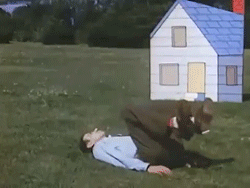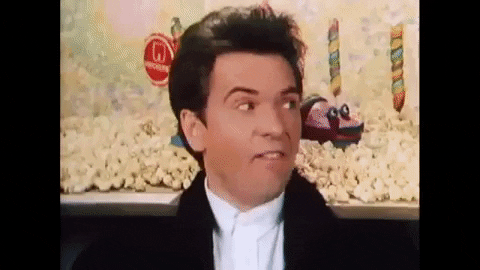Pixilation (Magic Blanket)

Norman McLaren's 'Neighbours' (1952)

'Sledgehammer' (1986)
The final week of experimental animation sessions was about pixilation- meaning stop-motion applied to real people and objects. During my animator research for blogs early in the year, I became more familiar with Norman McLaren's work with pixilation and the playful possibilities when using ourselves as the actors. I'm also reminded of Aardman and the Quay Brothers' music video for Peter Gabriel's Sledgehammer, which used the singer's face for various stop-motion effects, all in-camera.
Story of the day
Again, we were put in groups for this task. I worked with Luke, Tyulay and Louis.
I had brought in a blanket and proposed a couple of ideas for us to work on. The unused idea was for a traditional magician's trick, making someone appear behind the blanket, and then perhaps someone else emerging unexpectedly, and the magician finally inadvertently disappearing into the endless blanket portal. The other idea is what we went with- a magic carpet ride around the building.
Tyulay was to be the main actor on the magic carpet. Luke took the lead on camera duties for the first and final shots, which we shot back to back, at the same time and location. This would free us up to go around the building and put in as many travelling shots as we could shoot during the day, and we would still have a conclusion to the action. We timed out the opening and ending, understanding that the timing of the travelling would be quick in contrast. For the intro and ending shots, in the main we took more pictures than we needed. It was useful in the edit to splice in extra frames or remove pieces from the photos we had collected.
We all contributed to framing and shooting on the travelling shots, and they also presented opportunities to include ourselves in the action so we all made a cameo.
Unlike my first collaboration on the collage project, this time I found myself in definite disagreement on several occasions. There was no real animosity, just a lot of impasses, for which I tended to find myself outvoted. It's unusual for me not to be the default main creative voice driving decisions; typically in group scenarios I end up leading everything despite not being insistent on controlling the project.
Sometimes I just had to accept I was in the minority on some calls. For instance, I liked the idea of going up or down the stairs for one of the shots and this was very much disregarded as implausible or impractical. Some of these discussions I could feel in the moment were taking up as much time as if we just went ahead and shot something. There's always something to learn, and I suppose the valuable lesson is simply that we got there in the end, pushing to shoot enough for the purposes of the assignment.
Fixing in post
Much of what ultimately helped to make the film work came in the post-production. Fortunately for the most part we shot more frames than needed so we were able to cut frames out in the edit for a better pace. I finished off the edit at home when I could take the time to figure out where to help tighten up the lagging moments from the raw footage.
One particular moment that benefits from the edit is the pull of the blanket on first leaving the room. Originally Tyulay was posed in a more neutral position but as there was a similar more extreme pose available at the end of the scene, I spliced in a couple of frames showing a pull to bring the 'horse' to life.
I also took care of the sound effects, which added an extra spark of interest in the surreal nature of the horse sounds. That idea came up in the early discussions - we considered perhaps a car sound or a bus that could take more than one passenger, but the organic animal characterisation was the right way to go. I'm beginning to appreciate the role of sound in film-making, as I usually concentrate on visuals. The juxtaposition of the magic animal sound actually weirdly fits the footage, helping the lead the intention of the overall scene even if it's not explicitly seen.
It's reassuring to know there are these ways of improving a film, should I need to consider such fixes in the future.



